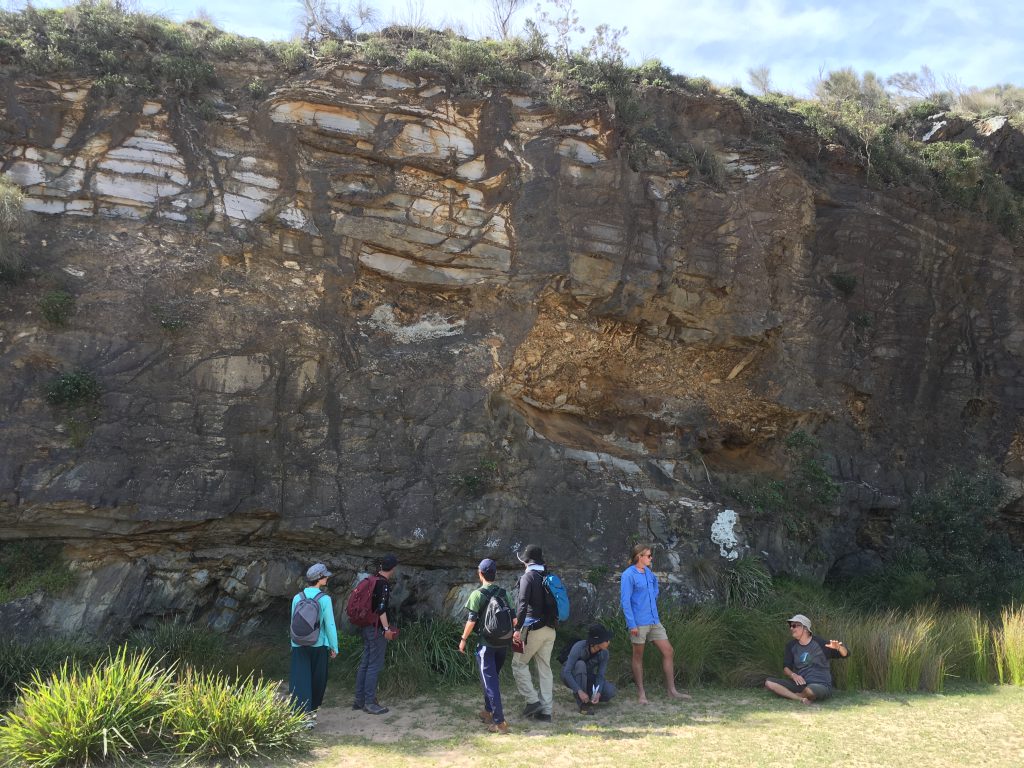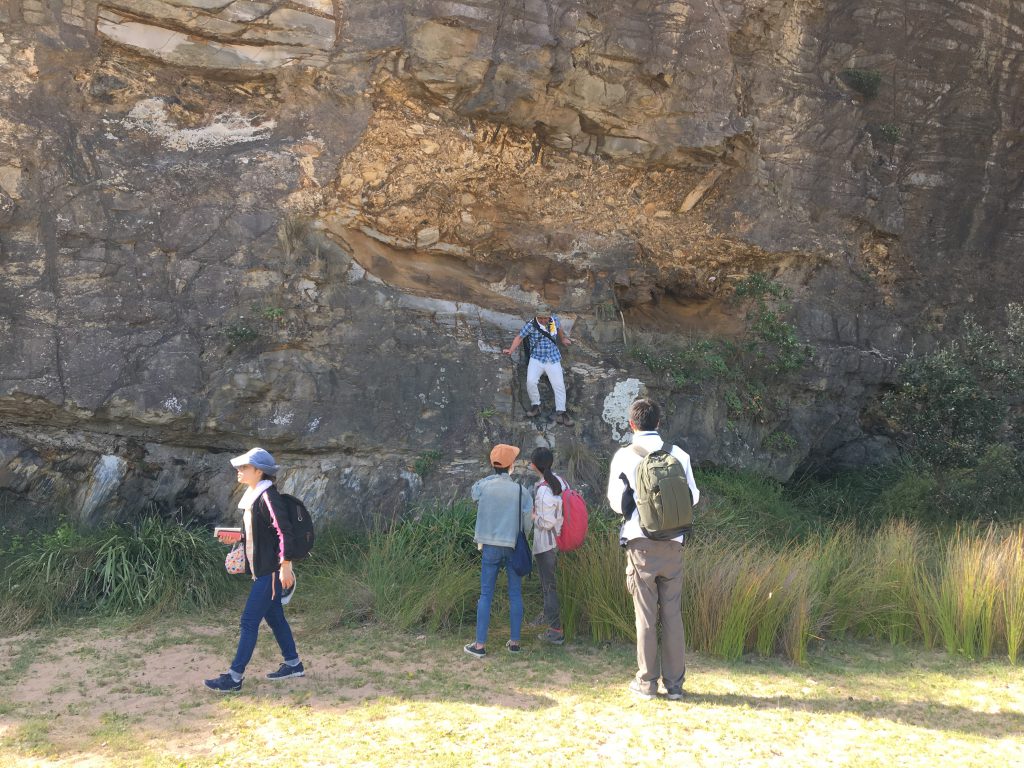General report of the AUS field trip/国際研修Iレポート Day 4 (2 Mar. 2019)
Bingie Bingie
The snowy mountain that we visited yesterday was a major S (Sedimentary) type granite in the Lachlan fold belt. We observed the I (Igneous) type granite today. The I type is made by partial melting from the basalt in deep underground, according to Ca, Mg and enclave such as hornblende. I type granite can be able to sulfonate with magnetite. In Bingie Bingie, mingling, mixing, dyke of Xenolith, Gabbro and I type granite were mainly observed. In Bingie Bingie, mingling can be seen that granite and gabbro were consolidated leaving their respective compositions and were further mixed in a semi-solid state with low temperature.
Mixing seems to have caused the felsic part from the granite to melt out by felsic gabbro colliding with solidified mafic granite, resulting in dyke and new crystallization differentiation. From the results of dating, it is known that granite and Gabbro were formed almost at the same time. It is thought that the gabbro was formed when a melt penetrated consolidated granite. In this case, the intrusive rock becomes angular.
Dyke was thick on the sea side and thinner toward the land side. The surroundings of dyke are granite, and in the upper and lower layers rounded xenolith can be confirmed. From this, it is thought that Gabbro was taken in before the granite was completely solidified. Inside dyke you can see amphiboles, quartzes, xenoliths, and bubbles. Xenolith can be seen only in part, which seems that melt stacked during penetration and partial melting occurred inside dyke. In addition, structures were mixed such as amphiboles and gabbro originating from the shallow part such as rocks and bubbles which are thought to originate from the deep part, and we were very interested in the development process of dyke. The land side of dyke is narrowed to about 1 m in width, and multiple layers of vitreous clench can be confirmed up and down. It is thought that the glass was formed by rapid cooling, and since it has multiple layers, the quenching event occurred more than once.

Myrtle Beach
On the southern side of Myrtle beach, we can observe the turbidite which was deposited in the Ordovician 350-450 Ma, below the Sydney Basin. It is inclined from southeast to northwest. There are lots of turbidite, and since it was in the arc of the Gondwana continent, it is thought that the submarine landslide has occurred many times. Many folds were part of the Lachlan fold belt, and the turbidite was deformed under stress.
On the northern side of Myrtle beach, unconformity can be seen above the sedimentary layer of Ordovician. It can be thought that there is an age gap of 10-50 million years with the unconformity between the top and bottom of the layer, but accurate restoration is impossible because the sediments are not continuous.
Permian sediments can be seen in the upper part. Sandstone is seen in the lower part, and fine sand to very fine sand classification structure is seen in the middle part from the bottom. There was also a layer of rounded coarse stones, which confirmed the cross-bed. It is conceivable that the sedimentary environment changed variously from shore to offshore. Angular boulder continues for more than 2 m in the upper layer, suggesting that there was a sudden deposition. As a cause, land slide, ice melt and flood can be considered, but there is little evidence. The upper layer of the Angular boulder layer is sandstone and it is thought that it returned to the coastal sedimentary environment again.

★Camp fire★
We enjoyed camp fire after dinner! We had a special time with viewing stars!



